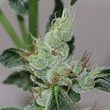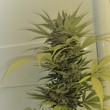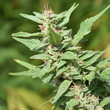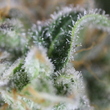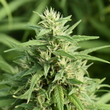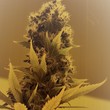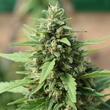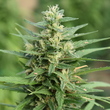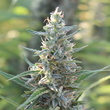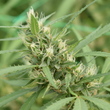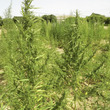Introducción
Phytocannabinoids are produced in Cannabis sativa L. in acidic form and are decarboxylated upon heating, processing, and storage. While the biological effects of decarboxylated cannabinoids such as Δ9-tetrahydrocannabinol have been extensively investigated, the bioactivity of Δ9-tetahydrocannabinol acid (Δ9-THCA) is largely unknown, despite its occurrence in different cannabis preparations. Here we have assessed possible neuroprotective actions of Δ9-THCA through modulation of PPARγ pathways. The effects of six phytocannabinoids on PPARγ binding and transcriptional activity were investigated. The effect of Δ9-THCA on mitochondrial biogenesis and PPARγ coactivator 1-α expression was investigated in Neuro-2a (N2a) cells. The neuroprotective effect was analysed in STHdhQ111/Q111 cells expressing a mutated form of the huntingtin protein and in N2a cells infected with an adenovirus carrying human huntingtin containing 94 polyQ repeats (mHtt-q94). The in vivo neuroprotective activity of Δ9-THCA was investigated in mice intoxicated with the mitochondrial toxin 3-nitropropionic acid (3-NPA).
Materiales y métodos
Δ9-THC and Δ9-THCA were purified from the Cannabis variety MONIEK (CPVO/20160114) and CBDA was purified from the variety SARA (CPVO/20150098) using a Counter Current Chromatography following a Phytoplant Patent method: “Methods of purifying cannabinoids using liquid: liquid chromatography” with code 10207199 B2. CBD was also purified from SARA variety and CBG and CBGA from the variety AÍDA (CPVO/20160167) following a patented method described in the Phytoplant Patents: “Methods of purifying cannabinoids, compositions and kits thereof” with code 9765000 B2. All the cannabinoids have a purity > 95%. CANNA products were used for the cultivation of all varieties.
Resultados
Cannabinoid acids bind and activate PPARγ with higher potency than their decarboxylated products. Δ9-THCA increased mitochondrial mass in neuroblastoma N2a cells and prevented cytotoxicity induced by serum deprivation in STHdhQ111/Q111 cells and by mutHtt-q94 in N2a cells. Δ9-THCA, through a PPARγ-dependent pathway, was neuroprotective in mice treated with 3-NPA, improving motor deficits and preventing striatal degeneration. In addition, Δ9-THCA attenuated microgliosis, astrogliosis and up-regulation of proinflammatory markers induced by 3-NPA.
Conclusión
Δ9-THCA shows potent neuroprotective activity, which is worth considering for the treatment of Huntington's disease and possibly other neurodegenerative and neuroinflammatory diseases.
Otras publicaciones
Ver más
Ver más
Ver más
Ver más
Ver más
Ver más
Ver más
Ver más
Ver más
Ver más
Ver más
Ver más
Ver más
Ver más
Ver más
Ver más
Ver más
Ver más
Ver más
Ver más
Ver más
Ver más
Ver más
Solicita información
¿Te podemos ser de ayuda? ¿Tienes alguna duda sobre nosotros? Escríbenos y contactaremos contigo cuanto antes.
